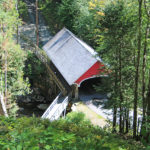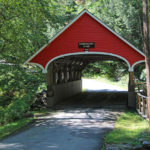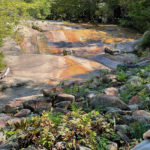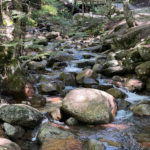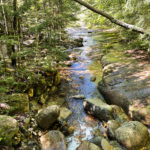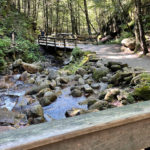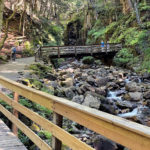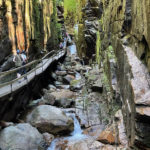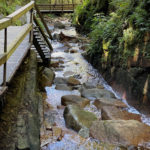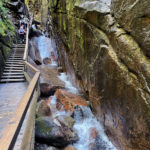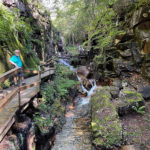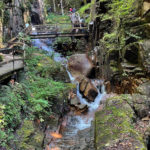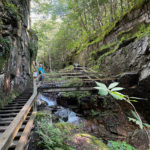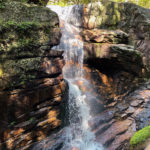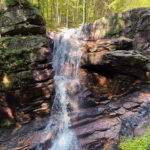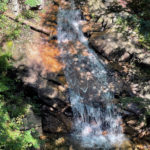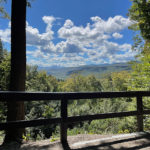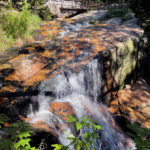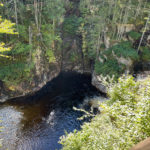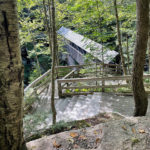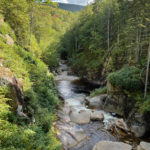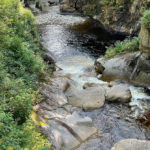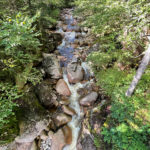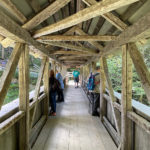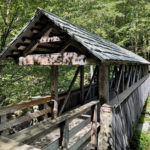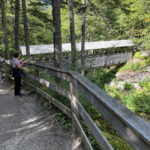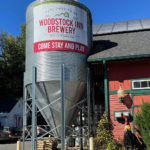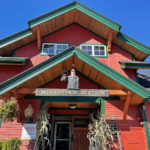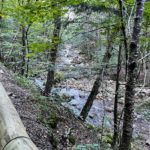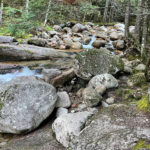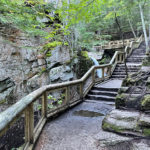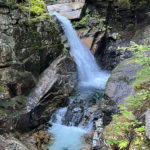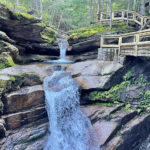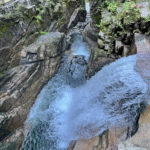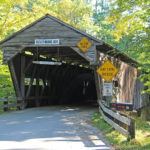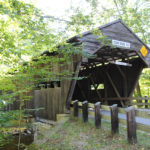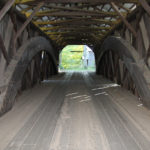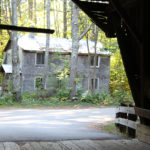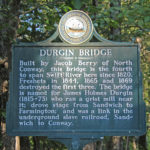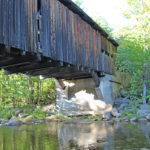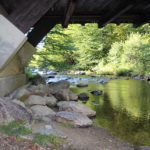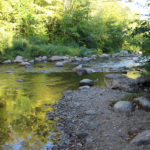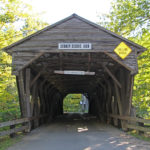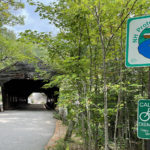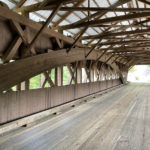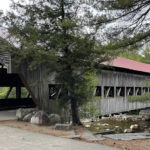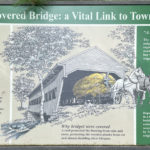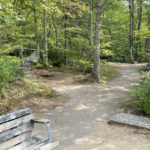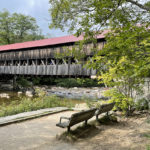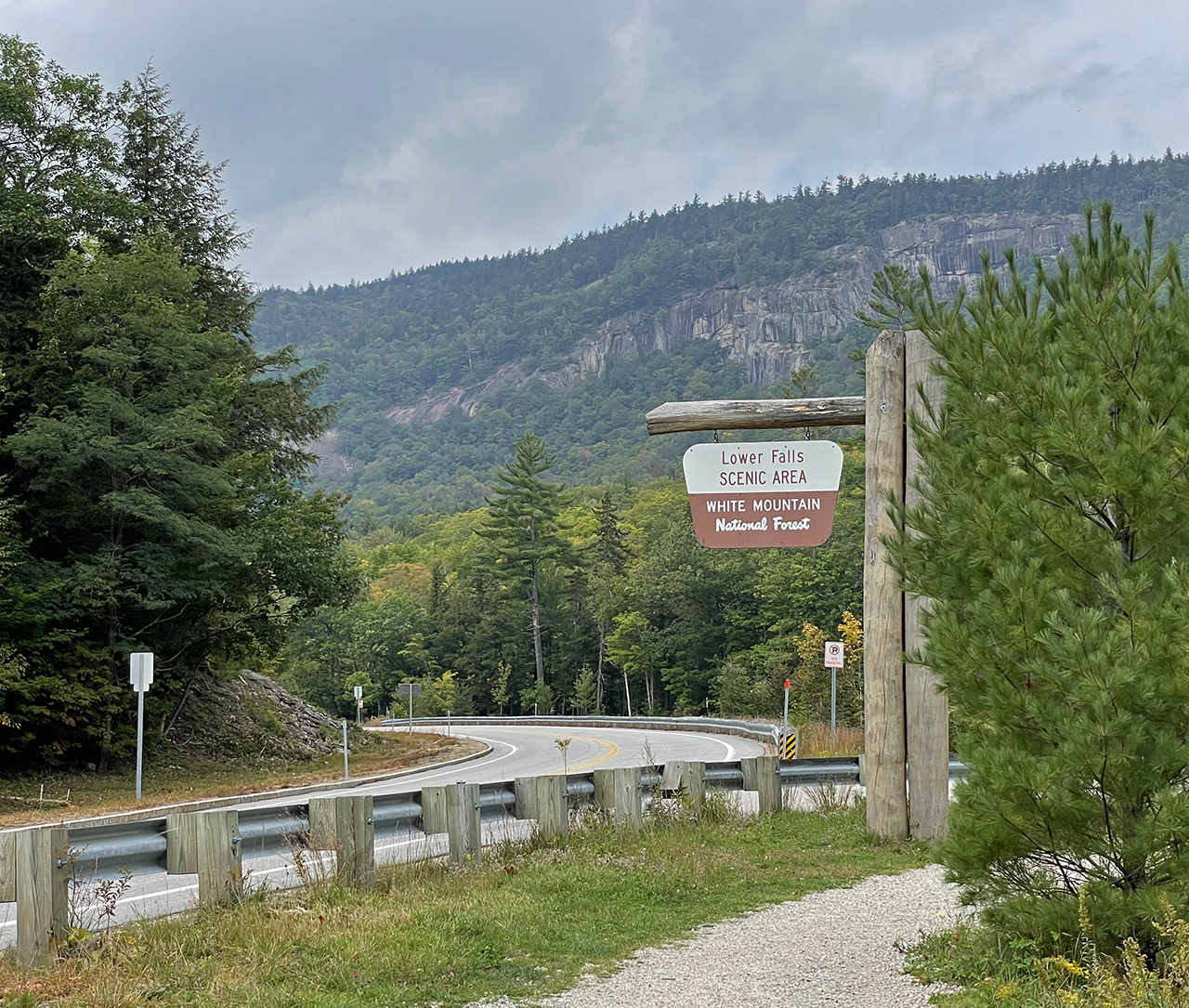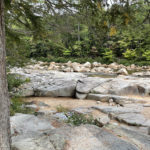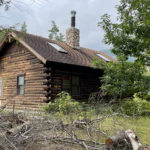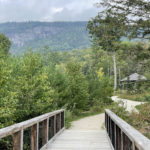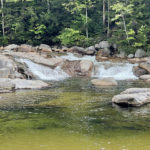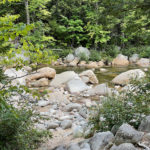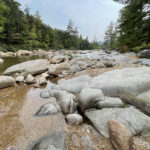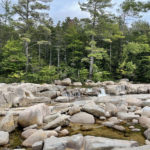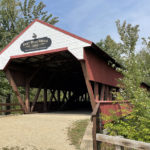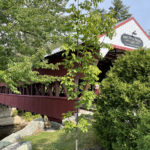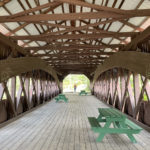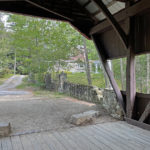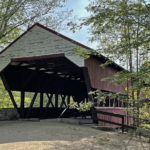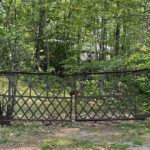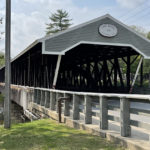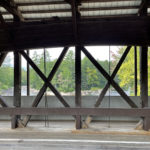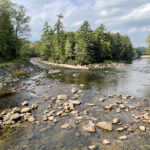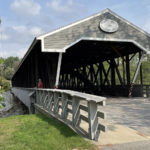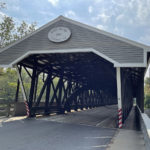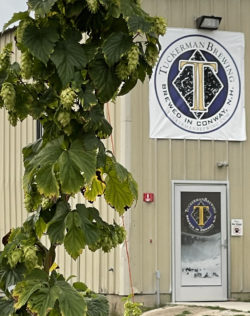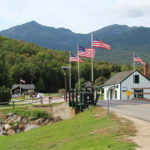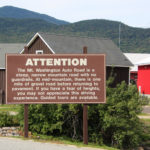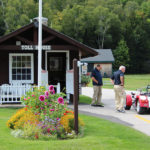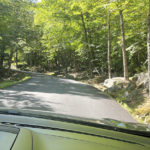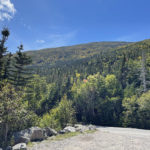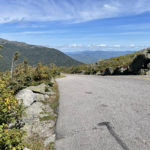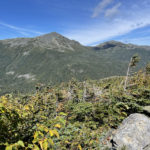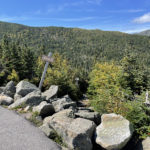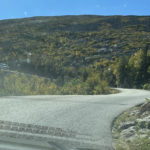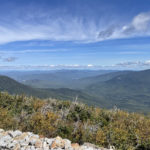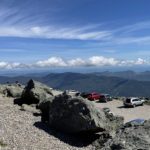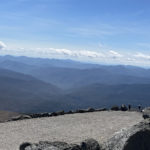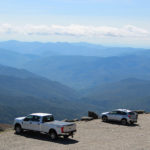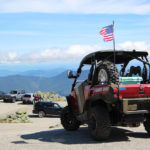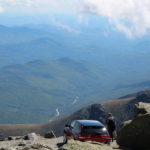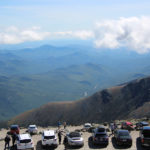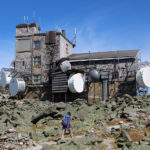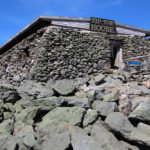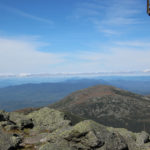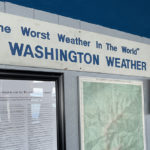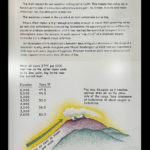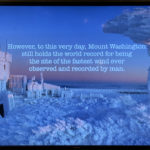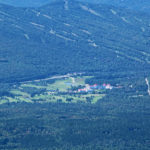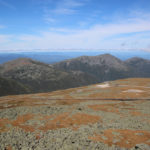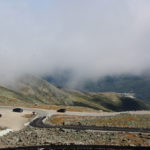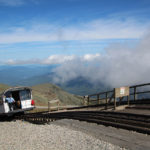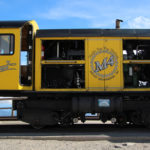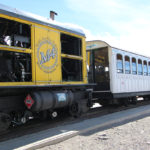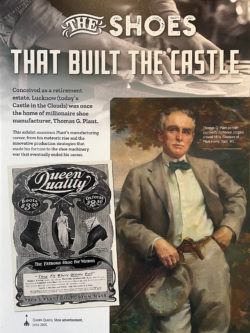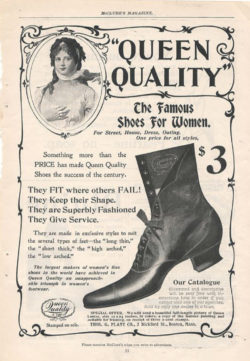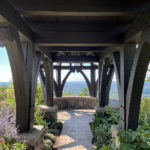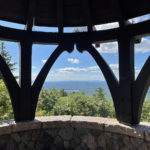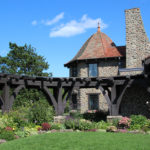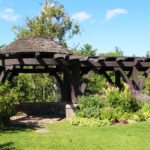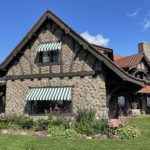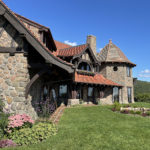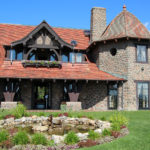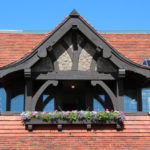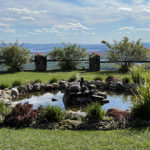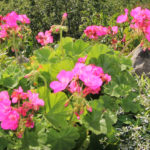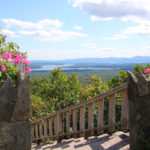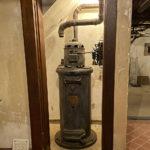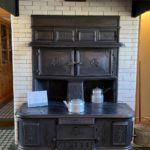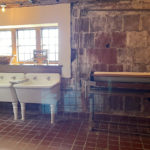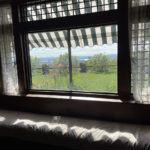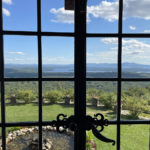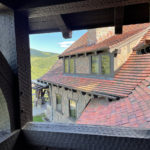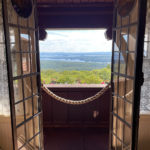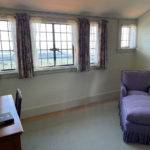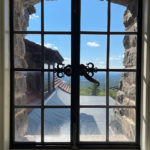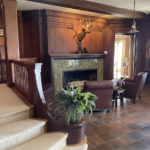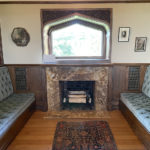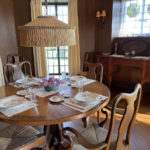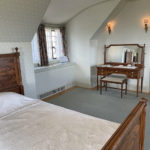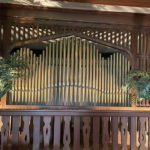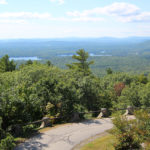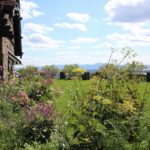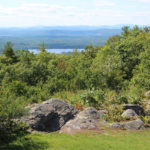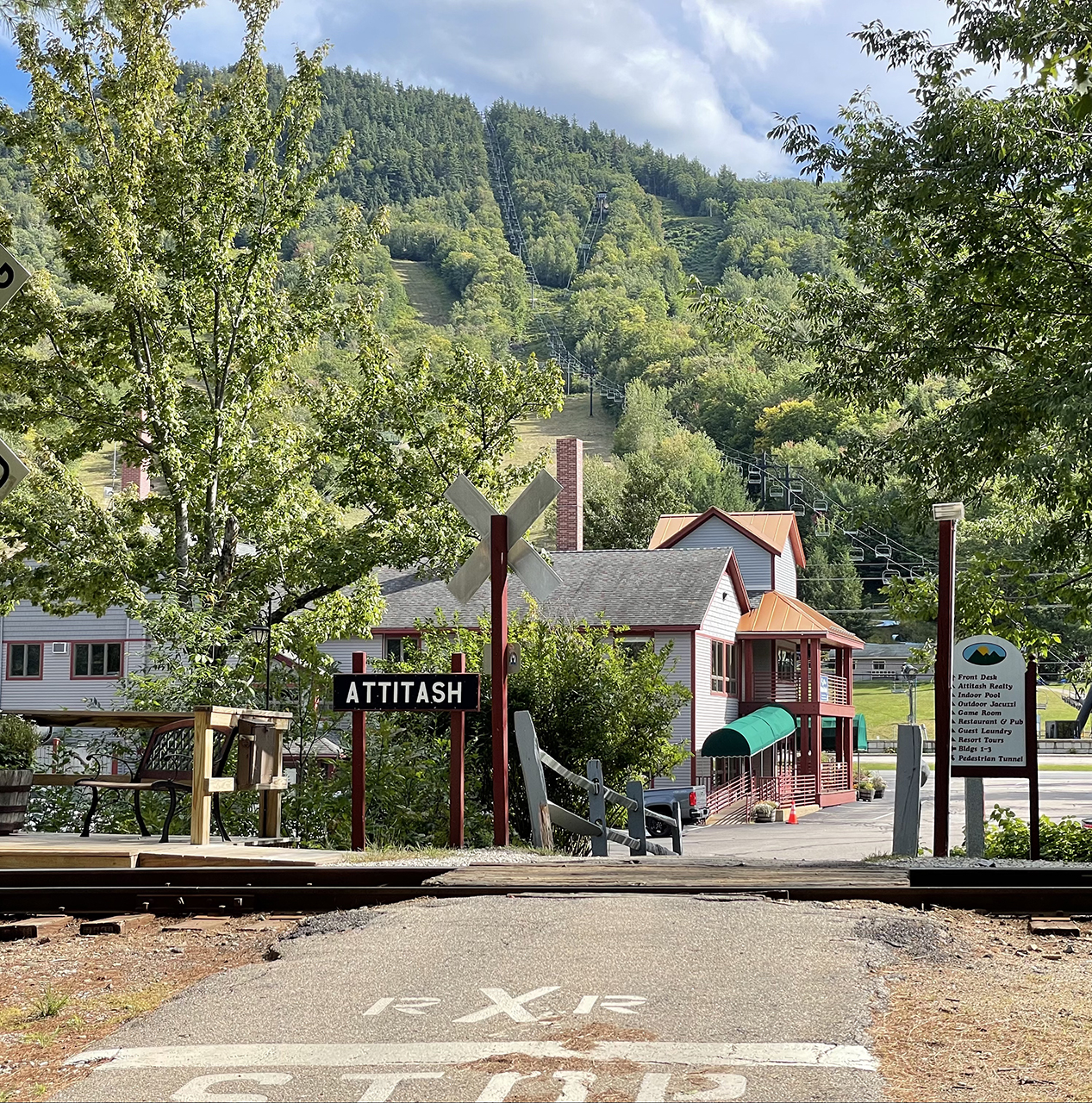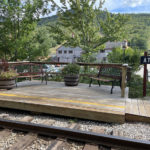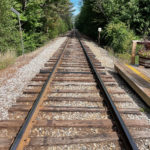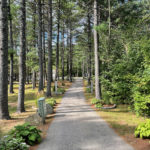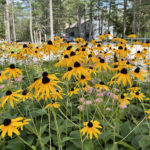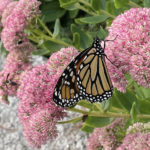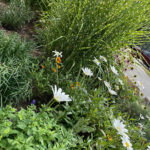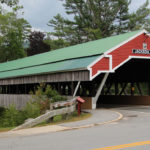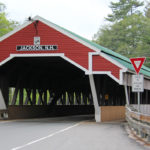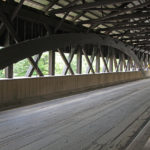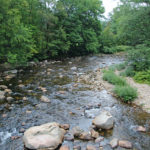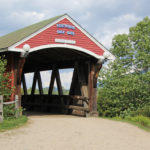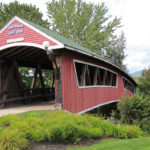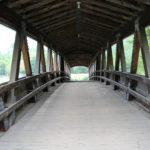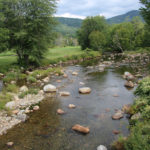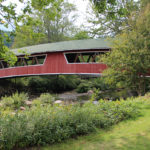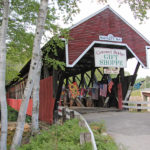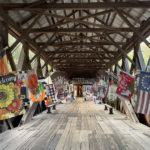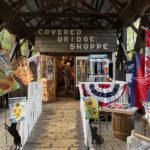This post is pretty much a combination of all things New Hampshire in one fantastic day! There were babbling brooks, wow–worthy waterfalls, and tree-covered mountains with glorious views. There were walks in the woods, two covered bridges, and a stop at one of our favorite breweries.
Click on the first photo in each group and scroll to see the square photos at full size.
To start at the beginning of this series, visit Fall for New England 2021.
Saving the Best Day in NH for Last
Although we’ve visited a pretty large percentage of the states in this great nation, not many can compare to the beauty of New Hampshire. We’ve been here twice and I wouldn’t be surprised if we return in the near future for another dose of its beauty. If you missed my previous posts, start with Another Week of Wow!
First Stop: Silver Cascade
I never gave much thought to the difference between a waterfall and a cascade. A waterfall flows over an edge and then falls freely. A cascade may flow quite steeply downhill, but it remains in close contact with the underlying rock. And there may be several small waterfalls within the cascade.
Silver Cascade plunges and cascades 250-feet down Mount Jackson, under the highway, eventually joining up with the Saco River. Its parking lot location right alongside US-302, offers very easy access – making it one of the most popular attractions in New England.
More Effort, Greater Return
Unfortunately like a lot of other visitors, we stopped and took several pictures and then headed on down the road. Had we taken more time to explore, we could have climbed up to get closer to the falls – venturing beyond the roadside views. Many of the greatest photographs of this cascade have been taken by putting in more effort.
Had we come a couple weeks later this year, the fall colors would have added a fantastic backdrop to this very impressive water feature. Click on this link to see a great photo of Silver Cascade in all its Autumn splendor.
Next Stop: The Flume Gorge
Franconia Notch State Park straddles I93 through Franconia Notch – a mountain pass in the beautiful White Mountains. The park offers great fishing lakes and miles of hiking and biking trails, but no trip to this area would be complete without a stop at the fantastic Flume Gorge.
The Visitor Center has information about the two-mile loop through the Gorge. Although they warn it is a strenuous walk, many stops along the way for photos and just to gawk can make it nice and relaxing. On a rainy day, the trail and stairs may be muddy and slick, but we didn’t have to worry about any of that on this absolutely perfect day.
“Adopt the pace of nature: her secret is patience.” ~ Ralph Waldo Emerson
Bridge over the Pemi River
The first stop on the loop is the Pemigewasset River Covered Bridge which was built in 1871. Also called the Flume Bridge, it’s only used by maintenance vehicles and pedestrians. There is a small walkway along one side of the bridge for better views of the river.
Since there were only a few others wandering around on this lovely day, rarely did I have to wait for too long to get pictures with no other people. The sound of the babbling river and the cool breezes through the trees made today one of our favorite days.
“And into the forest I go to lose my mind and find my soul.” ~ John Muir
There She Comes Again!
The falls were running a lot fuller on our last visit and the walkway seemed more slippery due to some splashing. Today was a perfect day and the only thing we had to worry about was a woman who was getting in her daily steps (literally) going up and down two or three times during our ascent.
It really got to be annoying, especially since at some spots passing is not easy, and I got sick of her pink shirt in all of my pictures. Good news is we got some good exercise too! Once we got closer to the top, we could hear the sound of Avalanche Falls – the last two pictures.
“After a day’s walk, everything has twice its usual value.” ~ G.M. Trevelyam
Once we made it to the top, we emerged to an awesome view. Then we were back in the woods, but this time headed downhill for a great view of The Pool.
“Beneath this point in the Pemigewasset River is a deep basin. Formed at the time of the ice sheet 25,000 years ago by a silt-laden stream flowing from the glacier. The cliffs surrounding The Pool are 80 feet high, the bowl is 150 feet in diameter, and 40 feet deep.” ~ from a sign nearby
Near The Pool we passed right by a small cave called the Wolf Den, because crawling on all fours is not in our wheelhouse anymore. Covered bridges are, however, just in case you don’t know that by now. Our first glimpse of the Sentinel Pine Bridge is shown below!
The River Below
The view from the Sentinel Pine Bridge was pretty fantastic too! It was nice to have some great scenery to check out while we waited for a traffic jam to clear.
The Sentinel Pine Bridge
“The Society for the Protection of New Hampshire Forests built this bridge in 1939 and maintained it until it was transferred to the state in 1948. The tall pine that gave the bridge its name once stood near the rear of the pool as if it were a sentry on guard. The great tree was over ninety feet tall, five feet in diameter, and estimated to be 100 years old when it was blown over in the 1938 hurricane.
Workmen took a sixty foot piece of the tree and placed it over the river forty feet above the water just north of the pool. Taking other trees that were blown down, they made the footbridge over the pine to protect and preserve it. The bridge is put together with wooden pegs…” ~ READ MORE
Lunch Stop
The Woodstock Inn Brewery deserved another try since it was such a great memory from our last visit. There’s a beautiful photo of the place and a list of their craft beers at the link. I’m getting thirsty just remembering that list! I’d highly recommend a beer and one of their awesome chicken salad sandwiches on their flower-filled patio.
Sabbaday Falls
“Sabbaday Falls is one of the most popular locations on the Kancamagus Senic Byway and is accesed via an easy 15 minute walk on an evenly graded and gravel surfaced trail from a paved parking lot, with a stone staircase and gravel walkway directly adjacent to the falls. The falls are a picturesque series of cascades in a narrow flume.” ~ READ MORE
After a pretty long day, we had just one more stop that was recommended by a friend. After a very pleasant stroll in the woods, a series of beautiful stairs followed Sabbaday Brook to the top of the falls – which were quite impressive!
Farewell New Hampshire. We’ll be Back!
Up Next: History 101
Happy trails,
Barb


